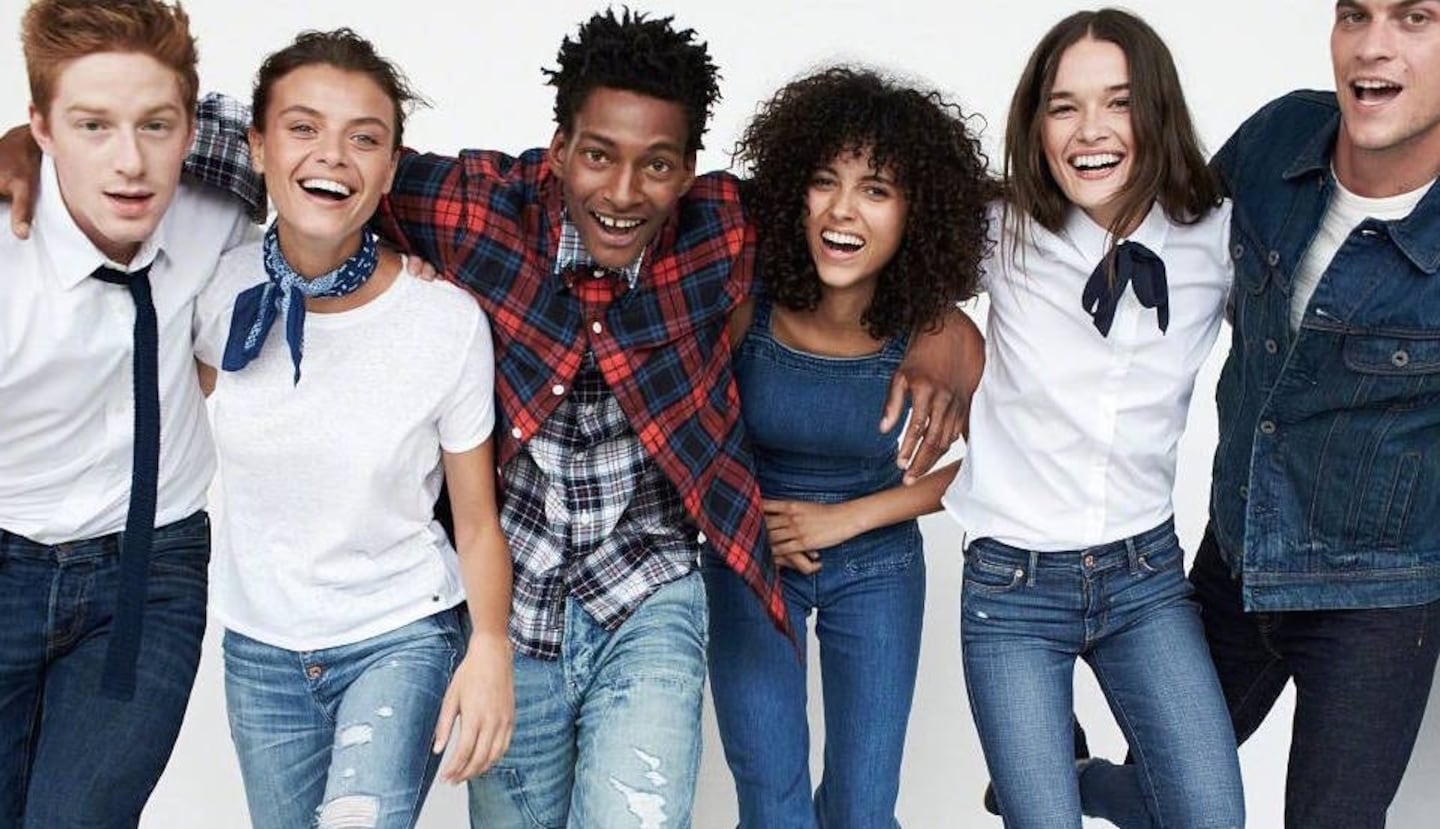
The Business of Fashion
Agenda-setting intelligence, analysis and advice for the global fashion community.

Agenda-setting intelligence, analysis and advice for the global fashion community.

NEW ALBANY, United States — Abercrombie & Fitch wants adults in their twenties to wear its selection of button-downs, jeans, and graphic tees. The grown-ups appear to be saying: Why would I?
Comparable sales for the Abercrombie brands, including both A&F and its small sister label for tweens, Abercrombie Kids, fell 7 percent last quarter, Abercrombie & Fitch Co. reported on Tuesday. Executives said problems at flagship and tourist-destination stores dragged down results for the company, which also owns teen clothing chain Hollister. The Abercrombie brand has not posted positive comparable sales since 2012.
"We're targeting a 20- to 29-year-old customer," Arthur Martinez, the company's 76-year-old executive chairman, said of the namesake brand in an interview. "We're clearly aiming for a more grown-up customer with greater sophistication and greater style."
Martinez is using older models to market the clothes and selling clothing that's more relevant to adults, such as work outfits and going-out gear. He said that he is not abandoning teens but they are no longer the company's focus. At least half of Abercrombie's customers are now over 20 years old, according to the company, and analysts agree that the new merchandise is going in the right direction. Still, there is a long way to go.
ADVERTISEMENT
Teens often are drawn to adult brands, aspiring to wear them one day but not yet able to afford them. It's much harder for a retailer to flip that dynamic. Why would a fully grown man or woman want to put on clothes that once pervaded high schools everywhere?
"We see limited reasons for older customers to shift back to a 'teen' brand and, frankly, there are better brands and lifestyles for the 20+ customer to focus on," Eric Beder, an analyst at Wunderlich Securities, wrote in a note to clients. "All in all, we believe the company faces a multi-year process before any material operating turn."
It has already been a multiyear process for Abercrombie. In 2014, executives expressed the desire to reach an older set of shoppers to separate the namesake brand from sister brand Hollister. Over the years, the two had become muddled, battling over the same teens. Executives decided to reposition A&F as a "premium" label for people in their twenties, hoping to add new customers while giving Hollister kids something to graduate to once they ditch teen clothes.
Hollister is faring much better than A&F, though comparative sales dipped 2 percent last quarter. It has continued to seek out teen shoppers with a new fast-fashion selection, and it appears to be increasing in popularity among upper-income teens, according to a survey from Piper Jaffray.
Abercrombie once focused on a brand that accepted the cool kids and shunned all the others. It worked for years, until young shoppers decided they didn't want to exclude their peers, don logos, or gawk at massive billboards of shirtless models. As it works to appeal to a broader set of customers, Abercrombie is having trouble establishing a distinct new image. For now, the brand remains amorphous.
"A&F still has much work before its brands are restored to full health," Neil Saunders, chief executive officer of retail consultancy and research firm Conlumino, wrote in a note to clients. As he sees it, Abercrombie needs to establish a "stronger sense of identity" if it wants to be relevant again.
As the holiday season approaches, Abercrombie will ramp up advertising to show shoppers its new personality, Martinez said. That personality promises to nourish the wearer's "best self and inner confidence," president and chief merchandising officer Fran Horowitz-Bonadies said.
"Research into today's young adult consumer demonstrates a shift in what confidence means," she said during a conference call with analysts. "It is no longer outer-directed but inner-direct. Image is less important than character, and it's more important to feel confident than to appear confident."
ADVERTISEMENT
So far, it seems shoppers just do not feel confident enough.
By Kim Bhasin; editor: Peter Jeffrey.
The British musician will collaborate with the Swiss brand on a collection of training apparel, and will serve as the face of their first collection to be released in August.
Designer brands including Gucci and Anya Hindmarch have been left millions of pounds out of pocket and some customers will not get refunds after the online fashion site collapsed owing more than £210m last month.
Antitrust enforcers said Tapestry’s acquisition of Capri would raise prices on handbags and accessories in the affordable luxury sector, harming consumers.
As a push to maximise sales of its popular Samba model starts to weigh on its desirability, the German sportswear giant is betting on other retro sneaker styles to tap surging demand for the 1980s ‘Terrace’ look. But fashion cycles come and go, cautions Andrea Felsted.